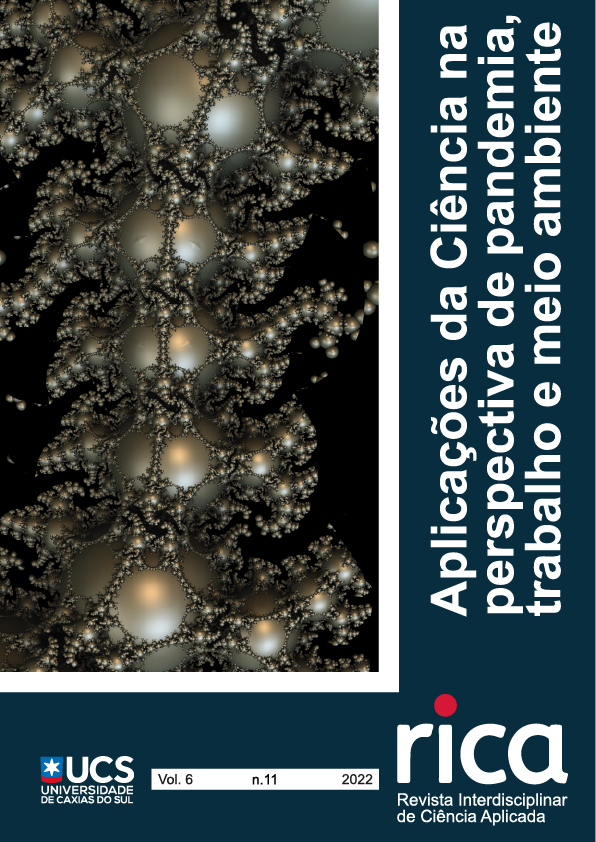Environmental Label Features and their Implications for Sustainability Market Practices Towards a Circular Economy
DOI:
https://doi.org/10.18226/25253824.v6.n11.08Keywords:
Circular Economy, Sustainable Development, Environmental LabellingAbstract
Waste management has undergone many changes since the end of the 20th century therefore, green products have gained increasing attention. This paper aims to understand the association between the use of labels to communicate a sustainable image by green marketing and their impact on consumer perception. Qualitative research was carried out, with a theoretical and empirical nature. No studies were identified analyzing the relationship between the communication of green marketing, aimed at the circular economy, by the environmental labeling perspective, being this groundedness the main contribution for studies improvement in the research field. Then, a sample of 60 product packages in 15 segments and 50 different brands was used. We found that the way the manufacturer seeks to communicate about the potential for reuse or recycling of the material used in the packaging can generate doubt in the consumer. Results demonstrate that no standard symbology is used in environmental labeling. Purchasing decisions would be influenced by information on environmental or ethical aspects of products. Studying how the industry labels its products and offers them to the consumer is certainly a way to understand the degree of maturity and how much progress can be made in terms of consumption and sustainable production. There is still a low relationship between the explored theories and their effective use in environmental labeling, so it is suggested to deepen this gap in future works. Although there is research on environmental labeling, few seek to identify in the field how the concepts and standards have been effectively applied. This study demonstrates that it is still necessary to advance both in terms of consumer understanding of what the labels say, and in aspects of standardization of labels by the industry.
References
Yang, Y. C. (2017). Consumer Behavior towards Green Products. Journal of Economics, Business, and Management, 5(4).
Dórea, R. J. D. S., Lopes Silva, D. A., de Almeida Neto, J. A., & Rodrigues, L. B. (2022). Environmental Labeling: An Analysis of the Past 22 Years of Research. Journal of International Consumer Marketing, 34(2), 184-200.
Elkington, J. (1999). Cannibals with Forks: The Triple Bottom Line of 21st Century Business.
Ribeiro, H. C. M., Corrêa, R., Souza, M. T. S. (out.2014/mar.2015). Marketing Verde: Uma Análise Bibliométrica E Sociométrica Dos Últimos 20 Anos. Revista Gestão e Sustentabilidade Ambiental, Florianópolis, 3(2), 87-112.
Barros, M. C. L., Amato Neto, J. (2011). A study on sustainability common topics in operations management and industrial ecology publication. In European Operations Management Association (Euroma) Conference, 18., Cambridge, 2011. Book of abstracts. Cambridge: Universityof Cambridge; EurOMA.
Instituto Brasileiro De Defesa Da Natureza - IBDN. (2017). Selos de Sustentabilidade – Por que levar para minha empresa? http://www.ibdn.org.br/2017/07/12/selos-de-sustentabilidade-porque-levar-para-minha-empresa/ (accessed 15.05.2018).
Brasil. (2010). Lei n. 12.305, de 2 de agosto de 2010. Institui a Política Nacional de Resíduos Sólidos; altera a Lei no 9.605, de 12 de fevereiro de 1998; e dá outras providências. http://www.mma.gov.br/pol%C3%ADtica-de-res%C3%ADduos-s%C3%B3lidos (accessed 15.05.2018).
Cason, T. N., &Gangadharan, L. (2002). Environmental labeling and incomplete consumer information in laboratory markets. Journal of Environmental Economics and Management, 43(1), 113-134.
Bjørner, T. B., Hansen, L. G., & Russell, C. S. (2004). Environmental labeling and consumers’ choice—an empirical analysis of the effect of the Nordic Swan. Journal of environmental economics and management, 47(3), 411-434.
Grolleau, G., & Caswell, J. A. (2006). Interaction between food attributes in markets: the case of environmental labeling. Journal of Agricultural and Resource Economics, 471-484.
Boström M., Klintman M. (2008) Introduction: Green Consumerism, Green Labelling?. In: Eco-Standards, Product Labelling, and Green Consumerism. Consumption and Public Life. Palgrave Macmillan, London. https://doi.org/10.1057/9780230584006_1
Stern, P. C. (1999). Information, incentives, and proenvironmental consumer behavior. Journal of Consumer Policy, 22(4), 461-478.
Whitson, D., Ozkaya, H. E., & Roxas, J. (2014). Changes in consumer segments and preferences to green labelling. International Journal of Consumer Studies, 38(5), 458-466.
Schwartz, D., Loewenstein, G., & Agüero-Gaete, L. (2020). Encouraging pro-environmental behavior through green identity labelling. Nature Sustainability, 3(9), 746-752.
Pedersen, E. R., & Neergaard, P. (2006). Caveat emptor–let the buyer beware! Environmental labelling and the limitations of ‘green consumerism. Business strategy and the Environment, 15(1), 15-29.
O'rourke, D., Lollo, N. (2015). Transforming Consumption: From Decoupling to Behavior Change, to System Changes for Sustainable Consumption. Annual Review of Environment and Resources, 40(1), 233-259.
Dias, R. (2007). Marketing Ambiental. São Paulo: Editora Atlas.
Tandon, M. S., Sethi, V. (2017). An Analysis of the Determinants of Consumer Purchase Behavior Towards Green FMCG Products. The IUP Journal of Marketing Management, XVI(3).
Lee, K. M., & Stensel, H. D. (1999, February). ISO standards on environmental labels and declarations and its implications on the market. In Proceedings First International Symposium on Environmentally Conscious Design and Inverse Manufacturing, pp. 504-508. IEEE.
Dosi, C., & Moretto, M. (2001). Is ecolabelling a reliable environmental policy measure?. Environmental and Resource Economics, 18(1), 113-127.
Lyon, T. P., & Maxwell, J. W. (2002). ‘Voluntary’Approaches to Environmental Regulation: A Survey, in In M. Franzini & A. Nicita (eds.), Economic Institutions and Environmental Policy (Aldershot, Hampshire, UK: Ashgate Publishing Ltd.).
Delmas, M. A., & Burbano, V. C. (2011). The drivers of greenwashing. California management review, 54(1), 64-87.
Polonsky, M. J. An Introduction to Green Marketing. Electronic Green Journal, 1.
Ottman, J. A. (1994). Marketing Verde: desafios e Oportunidades para a nova era do Marketing. Ediçãonúmero 1ª ed. São Paulo: Makron Books Ltda.
Churchill, G. A. Jr., Peter, J. P. (2012). Marketing: criando valor para os clientes. Ediçãonúmero 3ª ed. São Paulo: Saraiva.
Tukker, A. (2015). Product services for a resource-efficient and circular economy – a review. Journal of Cleaner Production, 97, 76-91.
Chamberlin, L., Boks, C. (2018). Marketing Approaches for a Circular Economy: Using Design Frameworks to Interpret Online Communications. Sustainability, 10(6), 1-27.
Ellen Macarthur Foundation. (2012). Towards the Circular Economy. https://www.ellenmacarthurfoundation.org/pt/publicacoes (accessed 04.06.2018).
Sellitto, M. A. (2018). Assessment of the effectiveness of green practices in the management of two supply chains. Business Process Management Journal, 24(1), 23-48
Braga Junior, S., Martínez, M. P., Correa, C. M., Moura-Leite, R. C., Da Silva, D. (2019). Greenwashing effect, attitudes, and beliefs in green consumption. RAUSP Management Journal, 54(2), 226-241.
Instituto De Pesquisa Econômica Aplicada. (2013). IPEA: Boletim regional, urbano e ambiental. http://www.ipea.gov.br/agencia/images/stories/PDFs/boletim_regional/131127_boletimregional7_cap2.pdf (accessed 15.05.2018).
Andreoli, T. P., Lima, V. A., & Prearo, L. C. (2017). A (in) eficácia dos selos verdes sobre o comportamento dos consumidores: um estudo experimental. Revista Eletrônica de Ciência Administrativa, 16(1), 62-79.
Farias, F. G., Pinto, F. R., de Sousa Araújo, D., de Menezes, B. S., & de Andrade, R. D. (2021). Uma Década de Estudos sobre Economia Circular: Tendências e Reflexões Através de Análise Bibliométrica Internacional. Internext, 16(3), 289-305.
Associação Brasileira de Normas Técnicas - ABNT. (2009). Programa ABNT de Rotulagem Ambiental. Brasília, 4 dez. 2009. (Workshop InternacionalsobreRotulagem Ambiental).
Associação Brasileira Da Indústria De Plástico - ABIPLAST. (2016). INMETRO – Programa de Rotulagem Ambiental Tipo III – Declaração Ambiental de Produto (DAP). http://abiplast.org.br/noticias/inmetro--programa-de-rotulagem-ambiental-tipo-iii--declaracao-ambiental-de-produto-dap/20160329154107_J_185 (accessed 20.06.2018).
Webster, J., Watson, R. T. (2002). Analyzing the past to prepare for the future: writing a literature review. Mis Quarterly, 26(2).
Yin, R. K. (2015). Estudo de Caso: Planejamento e métodos. Bookman editora.
Creswell, J. W. (2010). Research design: Qualitative, quantitative, and mixed methods approach. California: Sage Publications.
Miguel, P. A. C. et al. (2012). Metodologia de pesquisa em engenharia de produção e gestão de operações. Ediçãonúmero 2ª ed. Rio de Janeiro: Elsevier.
Jugend, D., Rojas Luiz, J. V., ChiappettaJabbour, C. J., A Silva, S. L., Lopes De Sousa Jabbour, Salgado, M. H. (2017). Green product development, and product portfolio management: empirical evidence from an emerging economy. Business StrategyandtheEnvironment, 26(8), 1181-1195.
Compromisso Empresarial Para Reciclagem - CEMPRE. (2018). A Rotulagem Ambiental e o Consumidor no Mercado Brasileiro de Embalagens.
Milios, L. (2018). Advancing to a Circular Economy: three essential ingredients for a comprehensive policy mix. Sustainability Science, 13(3), 861-878.
Barboza, L. L., Bertassini, A. C., Gerolamo, M. C., & Ometto, A. R. (2022). VALORES RGANIZACIONAIS COMO SUPORTE PARA A ECONOMIA CIRCULAR E A SUSTENTABILIDADE. Revista de Administração de Empresas, 62.
Kuz, E. L., & Sehnem, S. Circular Economy Mainstream: an Analysis of Master Thesis and Dissertations Mainstream da Economia Circular: uma Análise de Teses e Dissertações de Mestrado.
Downloads
Published
How to Cite
Issue
Section
License
Copyright (c) 2022 Karolina Crespi Gomes, Gabriela Almeida Marcon Nora, Cristiana Rennó D'Oliveira Andrade, Anete Alberton, Franciane Reinert Lyra

This work is licensed under a Creative Commons Attribution 4.0 International License.
Authors keep the copyright and cede to the journal the right of publishing first. Published works are licensed under a Creative Commons Attribution 4.0 International (CC BY 4.0) license, allowing the sharing of the work with recognition of the authorship and initial publication in this journal.






